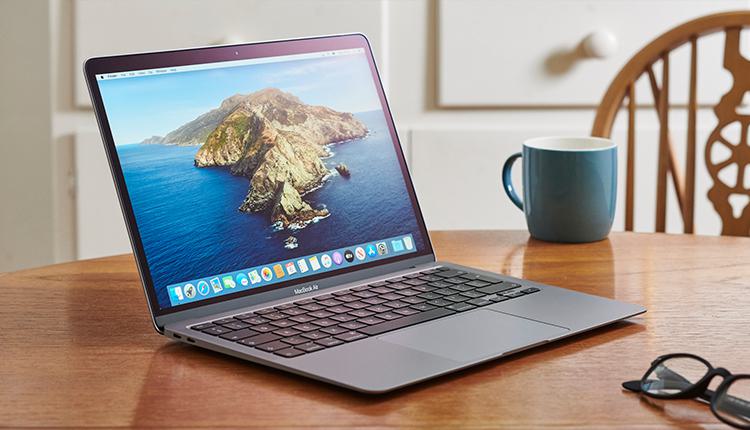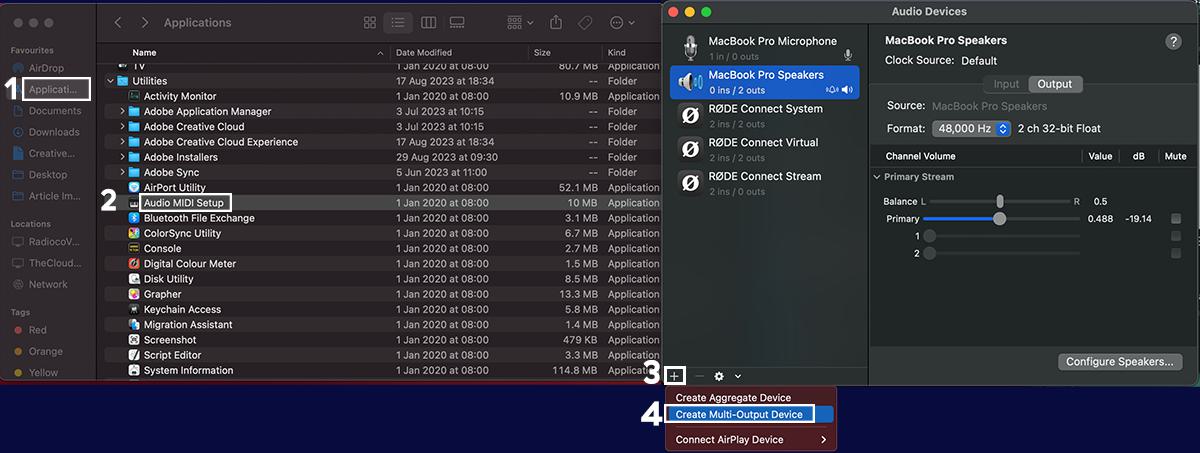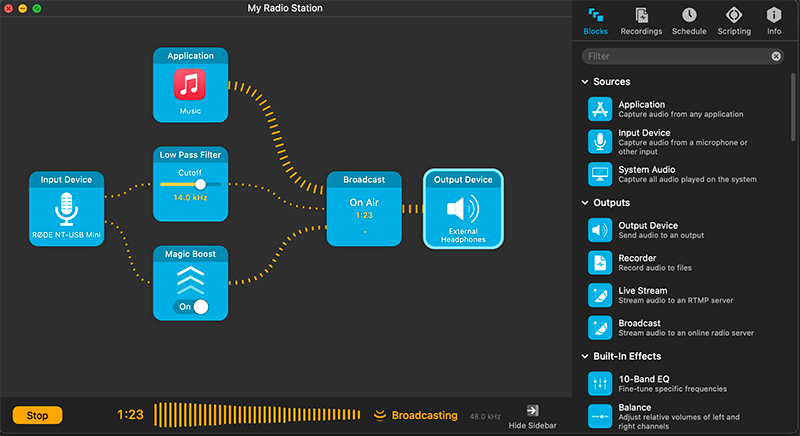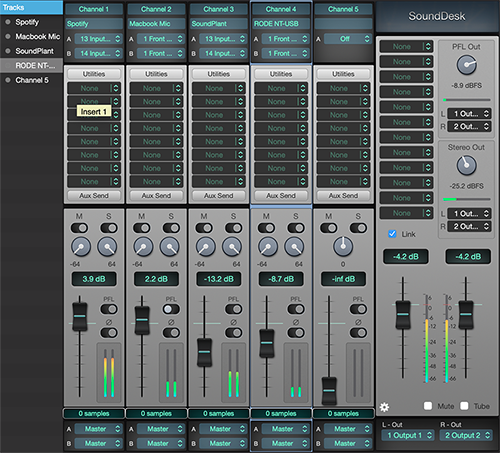Need advice? Let's talk.
Get straightforward guidance from your broadcasting partner. Schedule a call to chat with the team about your radio station.
Book DemoVirtual Audio Cables For Radio: Broadcast Your Computer's Audio
Send audio to the right place. Connect apps with a virtual audio cable setup for your radio station, but without the heavy hardware costs.

Virtual audio cables (VACs) are the missing piece of the puzzle in broadcasting audio from our apps. VACs are the cheap and easy way to route these audio sources to online radio stations.
Virtual Audio Cables Explained
Virtual audio cabling is the ability to take audio from one device or application to another without the need for any physical cables.

Physical cables have an in point, and an endpoint. The information enters at the in point and travels through the cable to come out of the end point. Virtual Audio Cables (VACs) mimic this. They have an in point where the audio enters, and an end point where it leaves.
Where they differ is VACs also loop the audio from the endpoint, back to the in point. This means apps can use VACs as their audio input.
VACs let us send audio from various apps to other ones so they can be mixed together and broadcast.
Using Virtual Audio Cables In Radio
A radio host uses audio sources from different apps and devices in their show. Such as music from iTunes or a call-in from Skype. Virtual cabling lets them send this audio to their online radio station.

And when coupled with a virtual mixer, broadcasters have greater control. They can mix together their audio sources from one central place, just like they would on a physical mixing desk. But at a fraction of the cost.
On top of this, hardware (like a microphone) connected to a computer, can be routed into the virtual audio mixer. And mixed with your other audio sources.
Broadcasting Your Mix From DJ Software
Some DJ software like Virtual DJ and Mixx let you broadcast directly to your Radio.co station. But what if your software (like Serato or versions of Traktor) doesn’t have this feature? You’re not stumped, and neither do you need to swap your software. The solution is to use a virtual audio cable instead.
VACs let you broadcast your system's audio. As your DJ software will produce audio on your system, this can be broadcast.
Virtual Audio Cable Set Up
Virtual Audio Cable Set Up For Broadcasting Mac Audio
After downloading a virtual audio cable, you'll need to create a multi-output device.
A multi-output device just ensures we can listen to our audio through headphones or speakers. Your virtual audio cable needs two outputs. One will be sent to your stream, and the other to listen via headphones or speakers.
In applications, go to Audio MIDI Set Up. From here, click the plus icon at the bottom of the window. Select 'Create multi-output device.'

In the righthand window, check the boxes for VB-Cable & external headphones or your computer's speakers. Also, ensure the master fader on each device is set to maximum.
If you want to send your audio to another output, you can check the relevant box too.
Now you need to change your Mac's sound settings, by going to System Preferences and selecting Sound. Change the input to your virtual audio cable (VB-Cable) and change your output to the "Multi-output device."
Remember this is the virtual audio cable bundled with your headphones/speakers.
Finally in your broadcasting software, like BUTT, change the input to the virtual audio cable.

Be sure to mute any other applications or programmes, unless you want the audio from them to be broadcast too.
Having issues with broadcasting from DJ software? Try changing your DJ software preferences: Set your input to VB-Cable and change your output to VB-Cable.
Virtual Audio Cable Set Up For Broadcasting Windows Audio
After downloading your virtual audio cable, you'll need to adjust the sound settings in your Windows sound settings.
Go to Control Panel, select Hardware & Sound (1) and select Manage audio devices (2).
From here, in Playback (3) select your virtual audio cable e.g. "Cable Input, VB-Audio Virtual Cable." (3) and hit OK.

In the Recording tab, select your virtual audio cable again.
If you hit OK, your sound preferences will be saved. However, you won't be able to hear the audio your system is playing, as the audio is in a closed loop. As it is, this isn't suitable for Radio.
To overcome this issue, go back in to the Recording tab (4) of your audio devices window.
Select your virtual cable again (5) and click properties (6).
Now, under the Listen tab (7), check the box "Listen to this device" (8) and Under the dropdown "Playback through this device." select your Speakers or Headphones (9).1.
Then hit OK.

The final step of this audio routing is to connect your virtual audio cable to your broadcasting software.
In your broadcasting software like BUTT, go to the Audio tab. Under Audio Device, select your virtual cable (the same virtual cable you've set as your playback and recording device in your windows settings).

Now when you play audio through your computer, this will be sent to your broadcasting software. Note: be sure to mute any other applications or programmes, unless you want the audio from them to be broadcast to.
Having issues with broadcasting from DJ software? Try changing your DJ software preferences: Set your input to VB-Cable and change your output to VB-Cable.
Simplify Virtual Audio Routing With Virtual Mixers
Virtual audio cables let us broadcast our computer's audio. But things get more complicated when we want to add in microphones or mix different audio sources.
This is where virtual audio mixers coming in. Virtual audio mixers give control over each of our audio sources and provide a central place for our audio routing. Virtual audio mixers simplify complicated audio routing.
Virtual Mixers Cost
Virtual Mixers are powerful bits of software. And virtual audio cable set up can be quite complex. Understandably then, the easiest to use Virtual Mixers are not always free. But they are affordable at $10-$90 per year.
Generally speaking, the more you want from your virtual mixer, the more expensive it is.
Virtual Mixers For Radio Broadcasting
Audio Hijack: Block-based virtual mixer for Mac
Audio Hijack is a powerful virtual mixer you can use for Macs. It costs $69 + local taxes.
Audio Hijack uses blocks that you can drag and drop within the app. Each block does various things. They can capture, record or manipulate different audio sources. And they can mix audio sources together and send it to various places.

Audio Hijack's advantage is letting you be selective over what you capture, record and broadcast. And it has an incredibly easy-to-use and intuitive interface. So, you can have granular control over your sessions.
And as you can have many audio sources (inputs), you can send this to many places (outputs). You can send your audio to be recorded, you can listen to to it through speakers or headphones, send it to a live stream and your radio station all at the same time if you wish.
VoiceMeeter: Fader-based virtual mixer for Windows
Voicemeeter is a virtual audio mixer for Windows which has 3 versions. When users download it, they'll also download the other versions: Voicemeeter, Voicemeeter Banana, Voicemeeter Potato. Each version has more inputs and outputs than the one previous. So users can use a more simple or complicated version depending on their needs.
Voicemeeter is available as Donationware, and the company has a guide on how much to donate based on the version you use and your usage.

Voicemeeter differs from Mac software Audio Hijack & Sound Desk, as users can't directly connect Apps to the mixers inputs. But no fear, this is where our familiar friend of VACs come in once again.
Users can set their audio preferences in a desired app to a virtual audio cable. Then route this cable to an input in Voicemeeter. For playing audio from the web, Chrome has an extension called Audio Pick for assigning your tab to a VAC.
Voicemeeter comes with some virtual audio cables, to make audio routing simpler, but you may need to download a few more.
SoundDesk: Fader-based virtual mixer for Mac
SoundDesk is a powerful virtual mixer for Macs. Its interface looks more like a familar mixing desks, as it uses channels.
SoundDesk has an add-on for virtual devices. Meaning you can route audio from any of your apps, into the mixer. You can mix these together and broadcast to your radio station.

While it's not quite as easy to use as Audio Hijack, it's not too complicated. And it is roughly half the price at $35.
SoundDesk comes with virtual audio drivers. Which allow you to route audio from your apps to the virtual mixing desk. The output of the mixing desk can be broadcast to your station, using the accompanying virtual audio cable that you can download with SoundDesk.
To Wrap Up
Virtual audio cables mean broadcasters can use their current apps to produce radio shows. As well as saving them a heap of cash as they don't have to invest in expensive hardware. Considering many of us listen to largely digital audio, virtual audio routing is a key component for online broadcasting. If you do go down this route, just be sure to check you're licensed for what you broadcast and you aren't breaching the terms of your apps.
If unsure of anything, get in touch with our support team by emailing help@radio.co. They'll be more than happy to help.



